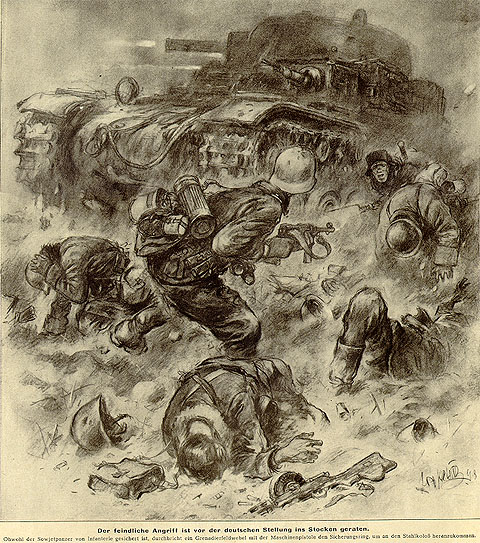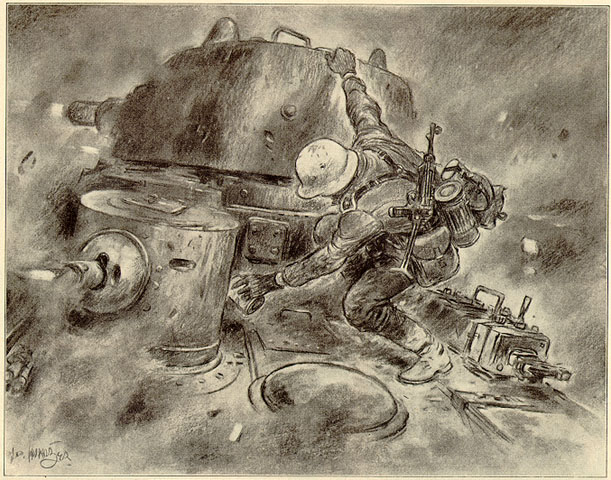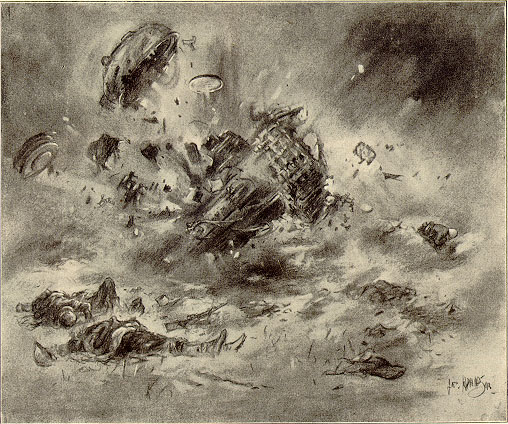


Background: This is a story on the Russian campaign from the Nazi Party’s weekly illustrated magazine. The Battle of Stalingrad was nearly over, but this story gives no hint of that. Rather, it presents a story suggesting that German heroism could overcome all. This is characteristic of much Nazi military journalism. The attempt was to get the photographers or artists as close to combat as possible, allowing them to provide vivid material to the home front.
The source: “Das ist Heldentum!,” Illustrierter Beobachter, 21 January 1943, pp. 2-3.
The homeland gets occasional details of the heroic defensive battle our soldiers are waging in the East. Names like Stalingrad, Welikje-Luki, Rschew, Illmensee and others have become symbols of the unbelievable heroism of German soldiers and their allies. We hear also of the heroism of individual soldiers, in comparison to whom all former military exploits pale. There is no point in giving the details of every individual act of heroism and bravery, for in the end all those fighting to stop the bestial foe are heroes. Like wolves in the forest, the enemy attacks only with overwhelming number. Every day, positions held by a few troops must withstand steady attacks by enemy masses. Yet they hold firm. Then masses of enemy artillery churn up the frozen soil. Suddenly a tank charges the few defenders. One man jumps up from the trench, then another. Carrying explosives, they charge the steel-covered monsters. These three drawings of a minor battle southeast of Illmensee show the heroism of one grenadier sergeant.

The enemy attack has begun. Although the Soviet tank is protected by infantry, a grenadier with a machine gun breaks through them to approach the steel giant.

While the tank is still firing, the grenadier sergeant climbs on, carrying an explosive charge.

The first tank is blown up. Two hours later the Soviets attacked again, supported by a second tank. The same sergeant dispatches it. The following night the Soviets attack again, this time with the support of several tanks. The sergeant climbs on yet another steel giant and blows its treads off, allowing the motionless tank to be completely destroyed. A single German soldier destroyed three enemy tanks within twenty-four hours.
[Page copyright © 1998 by Randall Bytwerk. No unauthorized reproducton. My e-mail address is avalable on the FAQ page.]
Go to the 1933-1945 Page.
Go to the German Propaganda Home Page.